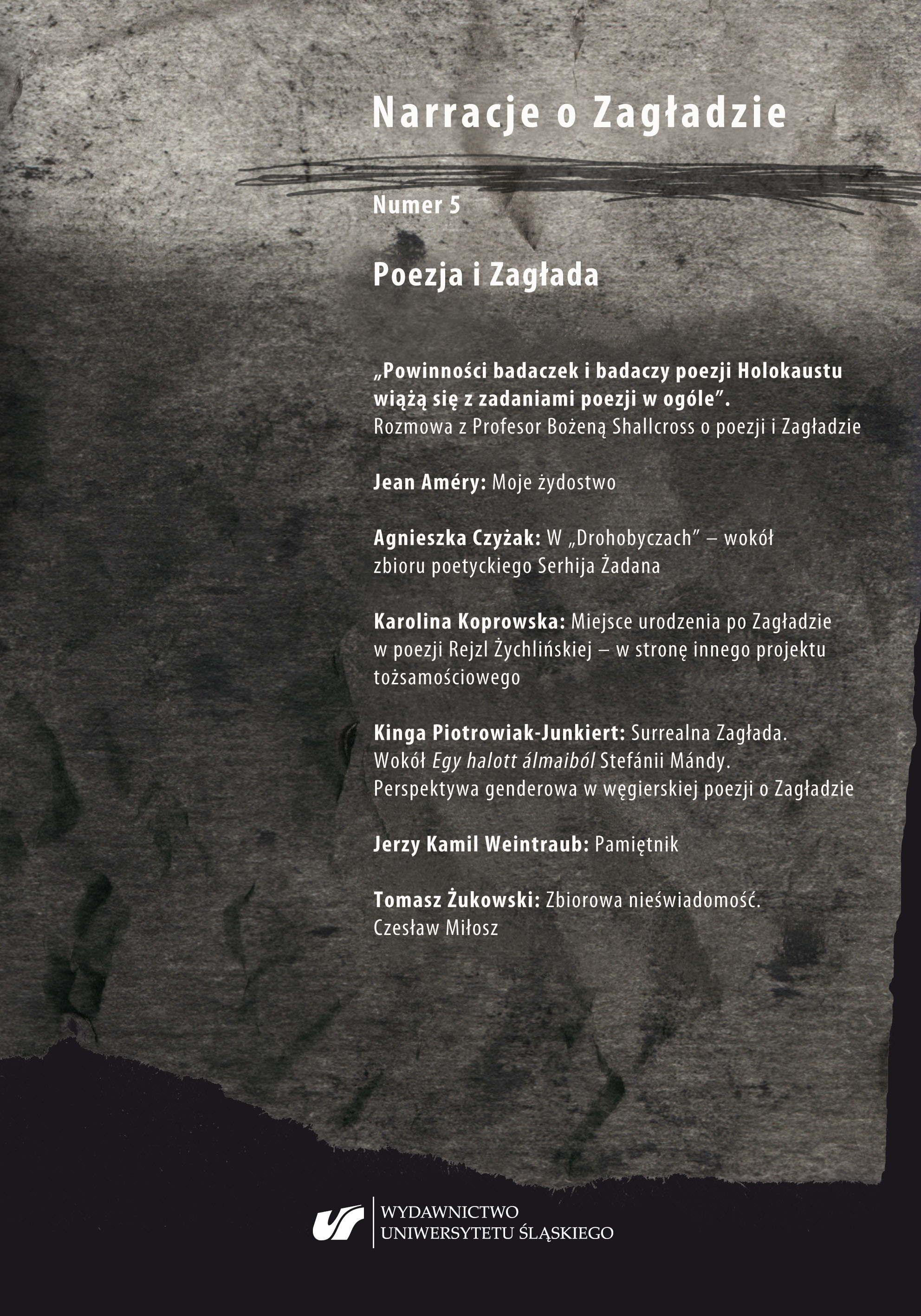Fiołek, stary dąb i Zagłada. Język symboliczny Ihr Zuschauenden Nelly Sachs
A Violet, an Old Oak, and the Shoah. Nelly Sachs’s “Ihr Zuschauenden” and Symbolic Language
Author(s): Bartłomiej KrupaSubject(s): Jewish studies, Polish Literature
Published by: Wydawnictwo Uniwersytetu Śląskiego
Keywords: German poetry; Nelly Sachs; Holocaust; bystanders;poetic language;
Summary/Abstract: This text is devoted to Nelly Sachs’s “Ihr Zuschauenden,” published in a volume entitled In den Wohnungen des Todes (1947). Beginning with a comparative reading of English and Polish translations (including those by Zbigniew Herbert and Ryszard Krynicki), this article distances itself from the frequently used category of a witness, understood as a passive observer of the Holocaust, and proposes to focus on the complex figure of the spectator of the Shoah. Furthermore, the symbolic language (Fromm) of Sachs’s poem is analysed as well, as the article describes its connections with Judaism and German culture. The figures of a turtle, a well, and – more importantly – a violet and an oak seem to allude not only to romanticism, but also to Shakespearean tropes. Significantly, an oak might also symbolise the German genesis. Such links paradoxically merge the sense of childhood nostalgia (“a lullaby”) and German natural landscape (“a violet,” “an oak”) with irretrievable loss caused by the Shoah. The last part of the article is dedicated to the reception of Sachs’s works, which, unnoticed at first, turned out to be the paragon of the Holocaust literature in the 1960, and then were appropriated and reduced to a school canon by the German culture she problematised so well in her works.
Journal: Narracje o Zagładzie
- Issue Year: 2019
- Issue No: 5
- Page Range: 98-125
- Page Count: 28
- Language: Polish

